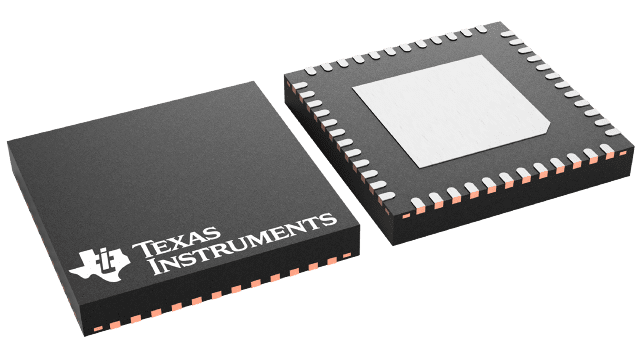Texas Instruments
SN65DP159RGZT
SN65DP159RGZT
Couldn't load pickup availability
SN65DP159RGZT Texas Instruments - Yeehing Electronics
6-Gbps DP++ 1.1 to HDMI 2.0 retimer 0 to 85C operating temperature
Pricing (USD)
| Quantity | Unit Price |
| 1 — 99 | 6.168 |
| 100 — 249 | 5.028 |
| 250 — 999 | 3.952 |
| 1,000 + | 2.35 |
The above prices are for reference only.
Specifications
| Manufacturer | Texas Instruments |
| Product Category | Interface - Signal Buffers, Repeaters |
| RoHS | Y |
| Product | Retimers |
| Propagation Delay Time | 360 ns |
| Maximum Clock Frequency | 400 kHz |
| Operating Supply Voltage | 1.1 V, 3.3 V |
| Minimum Operating Temperature | - 40 C |
| Maximum Operating Temperature | + 85 C |
| Mounting Style | SMD/SMT |
| Package / Case | VQFN-48 |
| Packaging | Reel |
| Data Rate | 6 Gb/s |
| Series | SN65DP159 |
| Type | DisplayPort to HDMI Retimer |
| Brand | Texas Instruments |
| Interface Type | 2-Wire, I2C |
| Number of Channels | 2 Channel |
| Ciss - Input Capacitance | 10 pF |
| Moisture Sensitive | Yes |
| Pd - Power Dissipation | 435 mW |
| Product Type | Signal Buffers, Repeaters |
| Factory Pack Quantity | 250 |
| Subcategory | Interface ICs |
| Supply Voltage - Max | 3.6 V |
| Supply Voltage - Min | 1 V |
| Tradename | DisplayPort |
| Unit Weight | 0.004035 oz |
For more information, please refer to datasheet
Documents
| SN65DP159RGZT Datasheet |
More Information
The SNx5DP159 device is a dual mode[1] DisplayPort to transition-minimized differential signal (TMDS) retimer supporting digital video interface (DVI) 1.0 and high-definition multimedia interface (HDMI) 1.4b and 2.0b output signals. The SNx5DP159 device supports the dual mode standard version 1.1 type 1 and type 2 through the DDC link or AUX channel. The SNx5DP159 device supports data rate up to 6-Gbps per data lane to support Ultra HD (4K × 2K / 60-Hz) 8-bits per color high-resolution video and HDTV with 16-bit color depth at 1080p (1920 × 1080 / 60-Hz). The SNx5DP159 device can automatically configure itself as a re-driver at data rates <1 Gbps, or as a retimer at more than this data rate. This feature can be turned off through I2C[4] programming.

